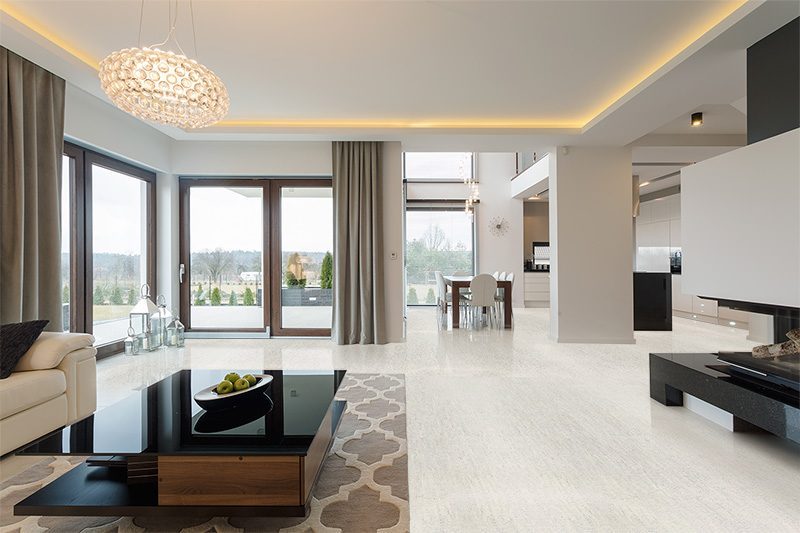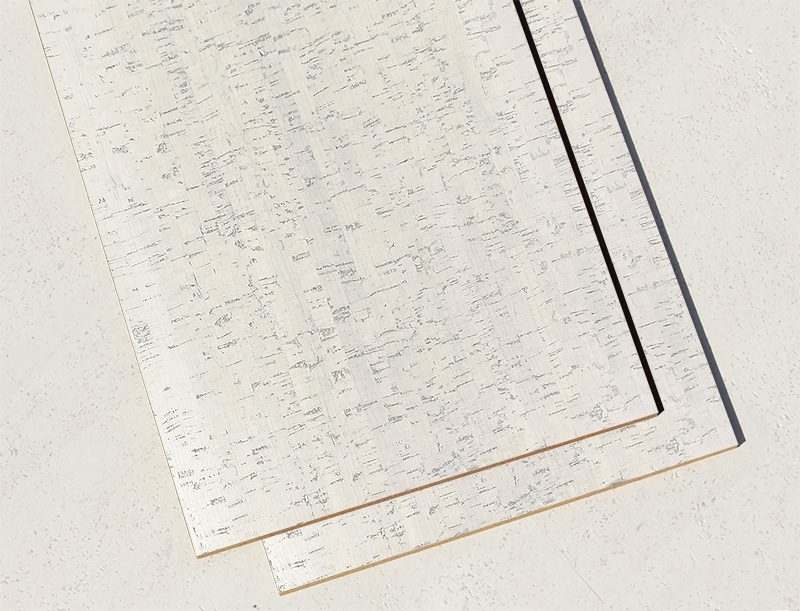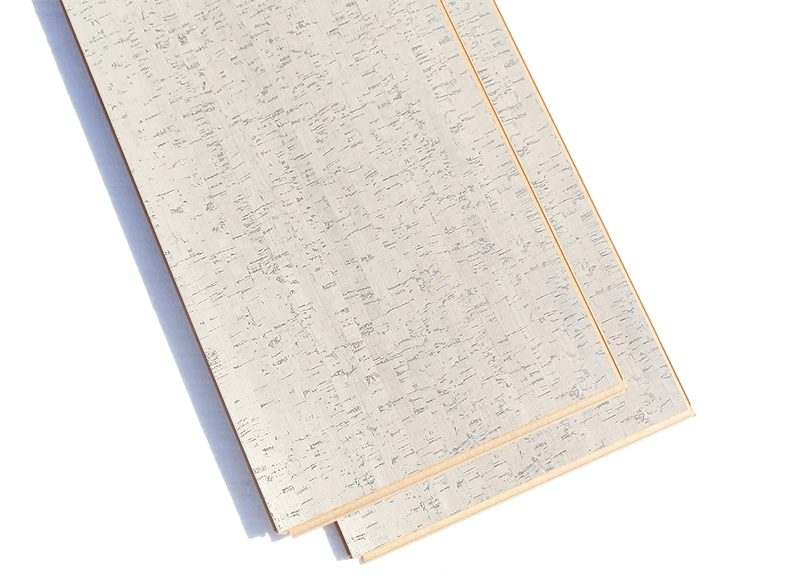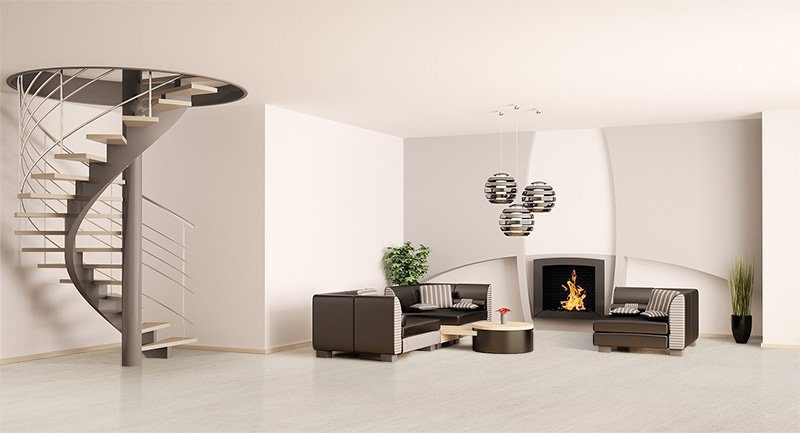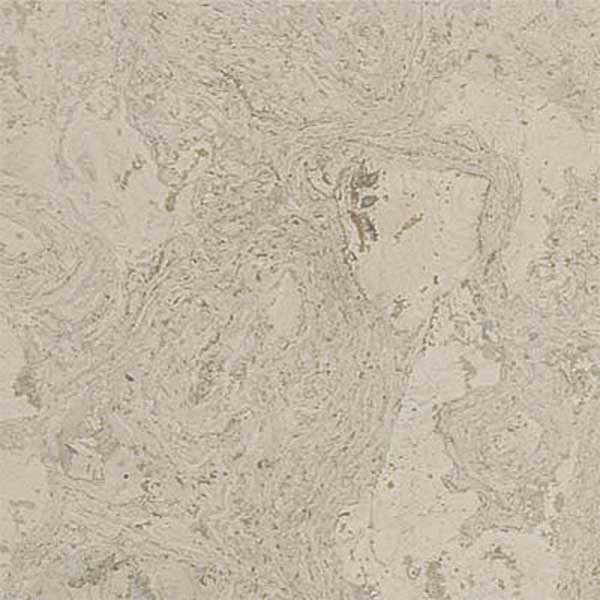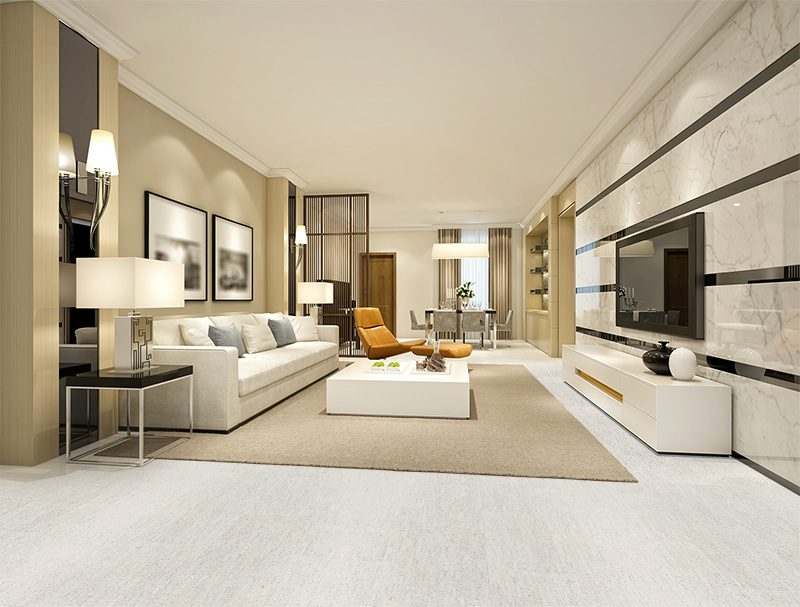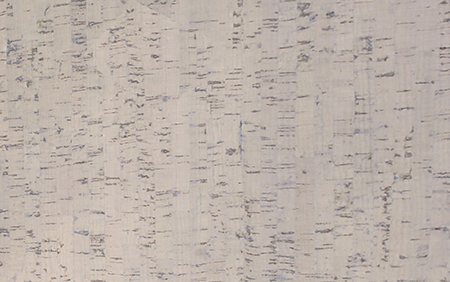Bleached Cork Flooring: A Stylish and Sustainable Option
Bleached cork flooring offers a unique blend of style, sustainability, and functionality, making it an increasingly popular choice for homeowners seeking eco-friendly flooring solutions with a modern aesthetic. Bleaching cork flooring involves lightening the natural color of cork to achieve a brighter, more contemporary look while retaining its inherent benefits. Here’s why bleached cork flooring is gaining traction in interior design:
- Natural Beauty: Bleached cork flooring maintains the natural warmth and character of cork while offering a lighter, more airy appearance. The bleaching process enhances the natural grain and texture of cork, resulting in a flooring option that exudes a subtle yet sophisticated charm.
- Sustainability: Cork is harvested from the bark of cork oak trees, a process that does not harm the tree itself, making cork flooring one of the most sustainable flooring options available. By choosing bleached cork flooring, homeowners can enjoy a stylish and eco-friendly flooring solution that contributes to environmental conservation.
- Comfort and Durability: Cork flooring is known for its exceptional comfort underfoot, thanks to its natural elasticity and resilience. Additionally, cork flooring is highly durable and resistant to moisture, mold, mildew, and pests, making it an ideal choice for areas prone to moisture exposure such as kitchens, bathrooms, and basements.
- Noise Reduction: One of the unique properties of cork flooring is its ability to absorb sound, making it an excellent choice for reducing noise transmission between floors in multi-level homes. This feature is particularly beneficial for homeowners looking to create a quieter and more peaceful living environment.
- Easy Maintenance: Bleached cork flooring is relatively easy to maintain, requiring regular sweeping or vacuuming to remove dirt and debris, followed by occasional damp mopping with a mild detergent solution. Additionally, cork flooring can be refinished periodically to restore its beauty and extend its lifespan, making it a long-lasting flooring option for your home.

Pros and Cons of Bleached Cork Flooring
Bleached cork flooring offers a range of benefits, but like any flooring option, it also has its drawbacks. Before deciding whether bleached cork flooring is the right choice for your home, it’s essential to consider its pros and cons. Here’s a breakdown of the advantages and disadvantages of bleached cork flooring:
Pros:
Sustainability: Cork is a renewable resource harvested from the bark of cork oak trees, making it an eco-friendly flooring option that contributes to environmental conservation.
Comfort: Cork flooring is naturally soft and resilient, providing a comfortable and cushioned surface underfoot. This makes it an ideal choice for areas where you spend a lot of time standing, such as kitchens or laundry rooms.
Durability: Despite its softness, cork flooring is surprisingly durable and resistant to scratches, dents, and stains. With proper care and maintenance, cork flooring can last for decades, making it a long-term investment for your home.
Insulation: Cork has excellent thermal and acoustic insulation properties, helping to keep your home warm in the winter and cool in the summer while reducing noise transmission between floors.
Style: Bleached cork flooring offers a modern and stylish aesthetic, with its light, airy appearance adding a touch of sophistication to any room.
Cons:
Susceptibility to Moisture: While cork flooring is naturally resistant to moisture, it is not entirely waterproof and can be damaged by standing water or excessive moisture exposure. It’s essential to wipe up spills promptly and avoid installing cork flooring in areas prone to flooding or high humidity.
Vulnerability to Damage: While cork flooring is durable, it can still be scratched or dented by heavy furniture or sharp objects. Using furniture pads and taking care when moving heavy items can help prevent damage to your cork flooring.
Initial Cost: While cork flooring offers excellent long-term value, it can have a higher upfront cost compared to some other flooring options. However, many homeowners find that the benefits of cork flooring outweigh the initial investment.
Fading: Over time, exposure to sunlight can cause bleached cork flooring to fade or discolor. To minimize fading, it’s essential to use window coverings or UV-blocking film to protect your cork flooring from direct sunlight.
Maintenance Requirements: While cork flooring is relatively easy to maintain, it does require regular sweeping or vacuuming to remove dirt and debris, as well as occasional damp mopping with a mild detergent solution. Additionally, cork flooring may need to be refinished periodically to maintain its appearance and durability.
How to Lay Bleached Cork Flooring in Your Home
Installing bleached cork flooring is a straightforward process that can be completed by homeowners with basic DIY skills and the right tools and materials. Whether you’re laying cork tiles or cork planks, proper preparation and installation techniques are essential to ensure a successful and long-lasting result. Here’s a step-by-step guide on how to lay bleached cork flooring in your home:
Prepare the Subfloor: Before installing cork flooring, ensure that the subfloor is clean, dry, and level. Remove any existing flooring materials, such as carpet or tile, and repair any cracks or uneven areas in the subfloor. If necessary, install a moisture barrier or underlayment to prevent moisture from seeping into the cork flooring.
Acclimate the Cork Flooring: To prevent warping or buckling, acclimate the cork flooring to the room’s temperature and humidity levels for at least 48 hours before installation. Stack the cork flooring planks or tiles in the room where they will be installed, allowing air to circulate them.
Plan the Layout: Determine the layout of the cork flooring, taking into account the dimensions of the room, the direction of the planks or tiles, and any obstacles such as doorways or cabinets. Use chalk lines or a straightedge to mark guidelines on the subfloor to ensure straight and uniform installation.
Install the Flooring: Begin installation in a corner of the room, working your way outward toward the walls. If using cork planks, stagger the joints to create a more natural appearance and ensure structural integrity. Use a tapping block and rubber mallet to gently tap the planks or tiles into place, ensuring a tight and secure fit.
Trim the Flooring: As you reach the edges of the room, you may need to trim the cork flooring to fit using a utility knife or a jigsaw. Be sure to leave a small gap between the flooring and the walls to allow for expansion and contraction.
Install Baseboards and Trim: Once the cork flooring is installed, install baseboards or trim around the perimeter of the room to cover the expansion gap and provide a finished look. Use finishing nails or adhesive to secure the baseboards or trim in place, taking care not to damage the cork flooring.
Seal the Joints: If installing cork tiles, seal the joints between tiles with a low-VOC cork seam sealer to prevent moisture infiltration and ensure a watertight seal. Allow the sealer to dry completely before walking on the floor or moving furniture back into the room.
Finish the Floor: Depending on the type of cork flooring you choose, you may need to apply a protective finish to the surface to seal and protect it from moisture, stains, and scratches. Follow the manufacturer’s instructions for applying the finish, and allow it to dry completely before using the floor.
Maintenance Tips
Bleached cork flooring is a stylish and sustainable option for your home, but like any flooring material, it requires regular maintenance to keep it looking its best. By following a few simple maintenance tips, you can preserve the beauty and durability of your bleached cork flooring for years to come. Here’s how to care for your cork flooring:
Sweep or Vacuum Regularly: To prevent dirt and debris from scratching the surface of your cork flooring, sweep or vacuum it regularly with a soft-bristled broom or a vacuum cleaner with a hardwood floor attachment. Be sure to remove any abrasive particles that could damage the finish.
Damp Mop Occasionally: In addition to dry cleaning, damp mop your cork flooring occasionally to remove stubborn dirt and grime. Use a mop dampened with a mild detergent solution and warm water, being careful not to saturate the floor. Avoid using excessive water, as cork flooring is susceptible to moisture damage.
Wipe Up Spills Promptly: Accidental spills should be wiped up promptly to prevent staining and damage to your cork flooring. Use a clean, damp cloth to blot up spills immediately, then dry the area thoroughly with a clean, dry cloth. Avoid using harsh cleaning chemicals or abrasive cleaners, as these can damage the finish of your cork flooring.
Protect from Furniture: Place protective pads or coasters under furniture legs to prevent scratching and denting of your cork flooring. Avoid dragging heavy furniture across the floor, as this can cause permanent damage. Use furniture sliders or lifts and carry heavy items instead.
Avoid Direct Sunlight: Direct sunlight can cause bleached cork flooring to fade or discolor over time. Use window coverings or UV-blocking film to protect your flooring from prolonged exposure to sunlight, especially in rooms with large windows or skylights.
Refinish Periodically: Depending on the wear and tear your cork flooring receives, you may need to refinish it periodically to restore its appearance and protect it from damage. Follow the manufacturer’s instructions for refinishing your cork flooring, and be sure to use products specifically designed for cork surfaces.
Maintain Humidity Levels: Cork flooring is sensitive to changes in humidity, so it’s essential to maintain consistent indoor humidity levels to prevent warping, buckling, or expansion of the flooring. Use a humidifier or dehumidifier as needed to keep humidity levels within the recommended range.
Incorporating Bleached Cork Flooring into Your Interior Décor
Bleached cork flooring offers a versatile and stylish foundation for your interior spaces, providing a light and airy backdrop that complements a variety of design styles. Whether you prefer a minimalist aesthetic or a cozy cottage vibe, there are countless ways to incorporate bleached cork flooring into your home décor. Here are some design ideas to inspire your next interior design project:
Modern Minimalism: Bleached cork flooring pairs beautifully with modern minimalist interiors, offering a clean and contemporary backdrop that allows furniture and accessories to take center stage. Pair your cork flooring with sleek, streamlined furniture, neutral color palettes, and minimalist décor accents for a stylish and understated look.
Coastal Chic: Bring the relaxed vibe of coastal living into your home with bleached cork flooring paired with nautical-inspired décor. Combine shades of white, blue, and sandy beige with natural textures such as rattan, jute, and driftwood for a breezy and beachy aesthetic that evokes the feeling of seaside living.
Scandinavian Style: Embrace the cozy simplicity of Scandinavian design with bleached cork flooring paired with clean lines, natural materials, and minimalist décor. Opt for light wood furniture, soft textiles, and plenty of greenery to create a warm and inviting atmosphere that celebrates simplicity and functionality.
Rustic Charm: Add a touch of rustic charm to your home with bleached cork flooring paired with rustic farmhouse-inspired décor. Mix and match vintage furniture, distressed wood finishes, and cozy textiles for a cozy and lived-in look that exudes warmth and character.
Eclectic Elegance: Showcase your unique style and personality with bleached cork flooring paired with an eclectic mix of furniture and accessories. Combine bold patterns, vibrant colors, and unexpected textures to create a playful and personality-filled space that reflects your individuality and creativity.
Mid-Century Modern: Channel the iconic style of the 1950s and 1960s with bleached cork flooring paired with mid-century modern furniture and décor. Opt for clean lines, organic shapes, and retro-inspired accents for a timeless and sophisticated look that pays homage to the golden age of design.
Urban Loft: Create an industrial-chic vibe in your home with bleached cork flooring paired with exposed brick walls, concrete accents, and sleek metal finishes. Add vintage-inspired furniture, industrial lighting, and bold artwork for an edgy and urban look that’s full of character.
Bleached Birch – 1/2 Inch (12mm) – Cork Floating Flooring
Bleached Birch – 1/2 Inch (12mm) – Cork Floating Flooring
1/4″ (6mm) Forna Glue Down Cork Tiles – Bleached Birch Soundproof
Bleached Birch – 1/4 Inch (6mm) – Cork Tile Glue Down (Floor And
22 SF Orani White Wash Premium Cork Tile Kit
ORC WEEK 2: FLOOR OPTIONS GALORE The Impatient Gardener
Home Theater, Room Acoustics, Natural Cork Soundproofing – ICork
Bleached Birch – 1/2 Inch (12mm) – Cork Floating Flooring
Bleached Birch – 1/4 Inch (6mm) – Cork Tile Glue Down (Floor and Wall)
Cork Flooring
Related Posts:
